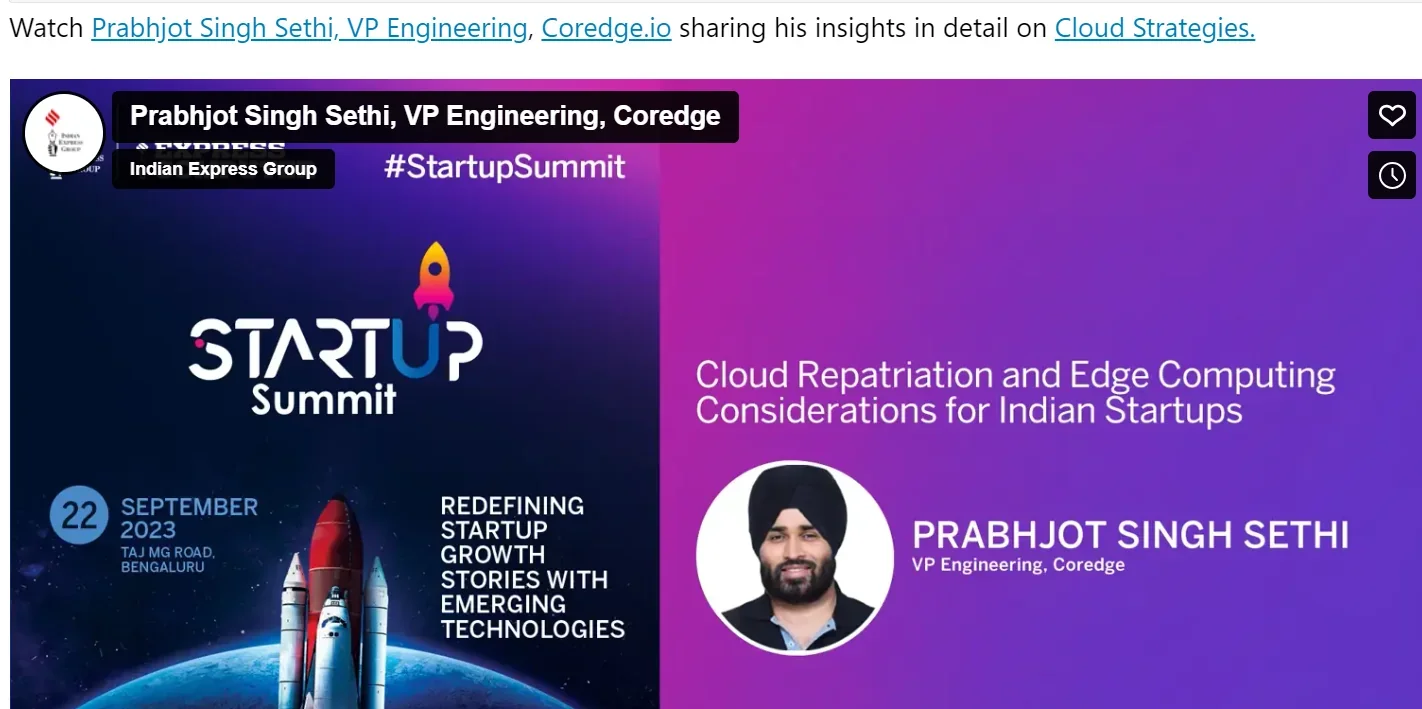Member post originally published on Coredge’s blog by Coredge Marketing

Adopting cloud computing is not always a one-way path as one might think. The cloud does not have all the answers, despite the fact that it is receiving a larger share of enterprise IT spending—a trend that IT analysts anticipate continuing. Enterprises are now realizing that they need to review their cloud strategies and think about bringing back data and workloads from cloud environments.
Although many companies now choose the cloud, there are still considerations to make regarding when and whether data should be repatriated—that is, moved back from cloud infrastructure. Although there aren’t many companies doing it currently, any cloud strategy should take data repatriation into account. There could be multiple reasons for doing it, including:
- Cost is one of the major factors.
- Ease of use. Some of the workloads don’t really need to run on the costly cloud infrastructure.
- Security and Compliances. Some business profit or viability concerns while working with cloud infrastructure, may drive you towards on-premises infrastructure.
- Security concerns
Perhaps as a result of local policies, where sovereign cloud is also becoming a topic that government organizations are actively addressing. An important factor in enterprises bringing their data in-house is internal policies. For example, there are strict laws governing the management of sensitive client data for healthcare and banking institutions. To meet legal requirements, these businesses might need to keep some kinds of information internally.
- Availability of infrastructure: Businesses should also ensure that the infrastructure they now have satisfies the needs for managing and storing data internally.
- Operations controls: This includes the expenses of operating the data center, maintaining the hardware and software, and hiring more employees. It also covers the cost of electricity, cooling, and maintenance.
Cloud Strategy – Considerations
Edge computing is a term that refers to the processing and analysis of data closer to the source, rather than sending it to a centralized cloud or data center. Edge computing can offer a more efficient alternative to cloud computing in some scenarios, such as when network latency, bandwidth, or security are critical issues. Edge computing can also enable faster and more responsive applications, as well as new use cases that require real-time data processing, such as autonomous vehicles, smart cities, or augmented reality.
However, edge computing is not a replacement for cloud computing, but rather a complement. Cloud computing still offers advantages in terms of scalability, cost-effectiveness, and centralized management. Edge and cloud computing can work together to optimize the performance and efficiency of data-intensive applications, depending on the specific requirements and trade-offs involved.
Edge computing can eliminate the need for costly bandwidth additions as there is no need to transfer gigabytes of data to the cloud. This can also enhance data security and privacy, as less data is exposed to potential breaches or leaks.
There are different strategies for extending cloud applications to on-premises or edge infrastructure to meet latency requirements. Some of them are:
- Hybrid cloud: A hybrid cloud is a combination of public cloud services and on-premises or edge infrastructure that are integrated through common services, tools, and interfaces. A hybrid cloud can enable applications to leverage the scalability and flexibility of the cloud while processing data locally to reduce latency and network costs.
- Edge cloud: It is a paradigm that distributes computation and data storage across the cloud and the edge devices, such as sensors, cameras, or smartphones. Cloud-edge computing can enable applications to perform data processing closer to the data sources or users, reducing latency and bandwidth consumption.
- Multi-cloud: Multi-cloud: A multi-cloud strategy is the use of multiple public cloud services, typically from different cloud providers. A multi-cloud environment allows you to have private, public, or combined cloud environments. A multi-cloud strategy’s primary goal is to provide you with the flexibility to operate with the best computing environment for each workload. It promotes greater agility and flexibility. Reduces the risk of vendor lock-in and improves cost optimization and efficiency by leveraging different cloud providers’ competitive pricing and features.
- Multi region: A multi-region cloud strategy is a way of designing and deploying cloud-based applications and services across multiple geographic locations. This can help improve performance, availability, scalability, and compliance for different workloads and users.
Use Cases Across Different Industries:
Global demand for real-time data processing, reduced latency, and better user experience is driving the growth of edge cloud. It is utilized in many different industries, such as media and entertainment, manufacturing, gaming, telecommunications, and healthcare. Here are few examples:
Video analytics processing: Data stream processing is a technique that processes data in video, such as sensor readings, camera recordings, and web clicks. Data stream processing can enable applications to analyze and act on data in real-time or near-real-time, providing timely insights and responses.
Private 5G: Hybrid cloud is crucial for the deployment of private 5G networks, which require real-time processing and low latency. By deploying edge computing resources closer to the network edge, private 5G networks can deliver high-speed connectivity, lower latency, and enhanced security.
Smart cities and buildings: Edge cloud is being used to support smart city and building applications, such as sound detection, parking space management, utility metering, and security/surveillance. Edge cloud can enable real-time processing of data from sensors and cameras, enabling better infrastructure planning and management.
Watch Prabhjot Singh Sethi, VP Engineering, Coredge.io sharing his insights in detail on Cloud Strategies.

Solution:
Cloud Orbiter is a multi-cloud, multi-cluster orchestrator platform that provides hyper-scaler-like capabilities for distributed edge deployments. It allows clusters across the globe to connect to a central Orbiter controller and become part of the unified management plane. Coredge solutions offers seamless infrastructure management and visibility, centralized access control, application onboarding, and cluster lifecycle management. Connect with us to know more about our solutions and how can we help you balancing the Cloud Strategies and Edge Computing.